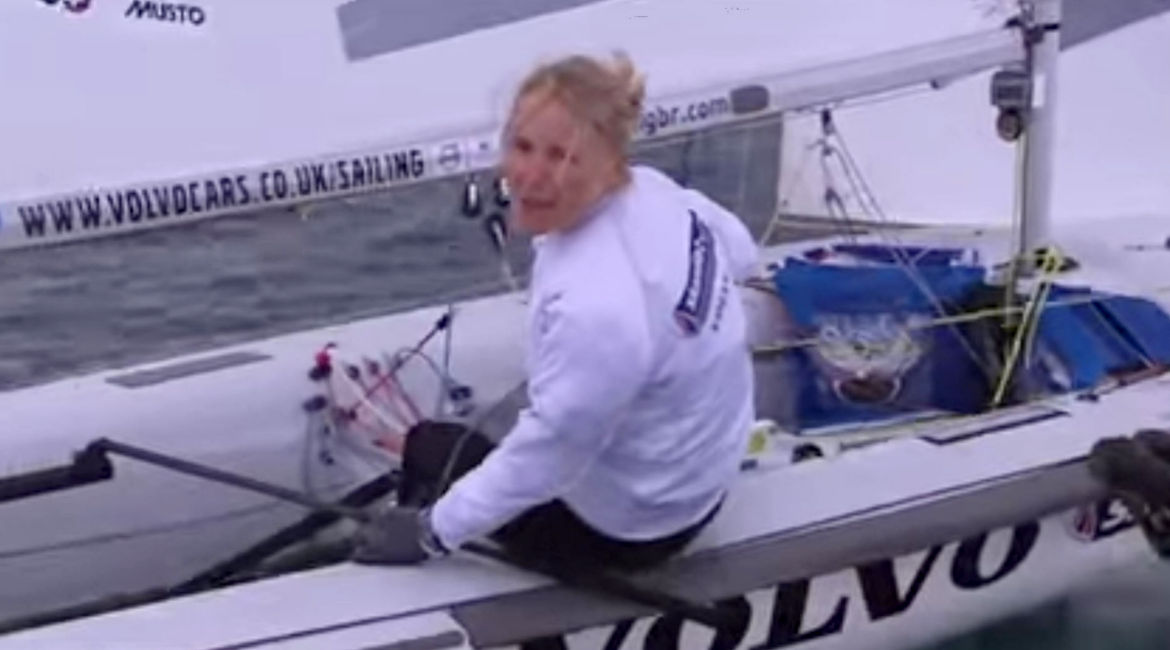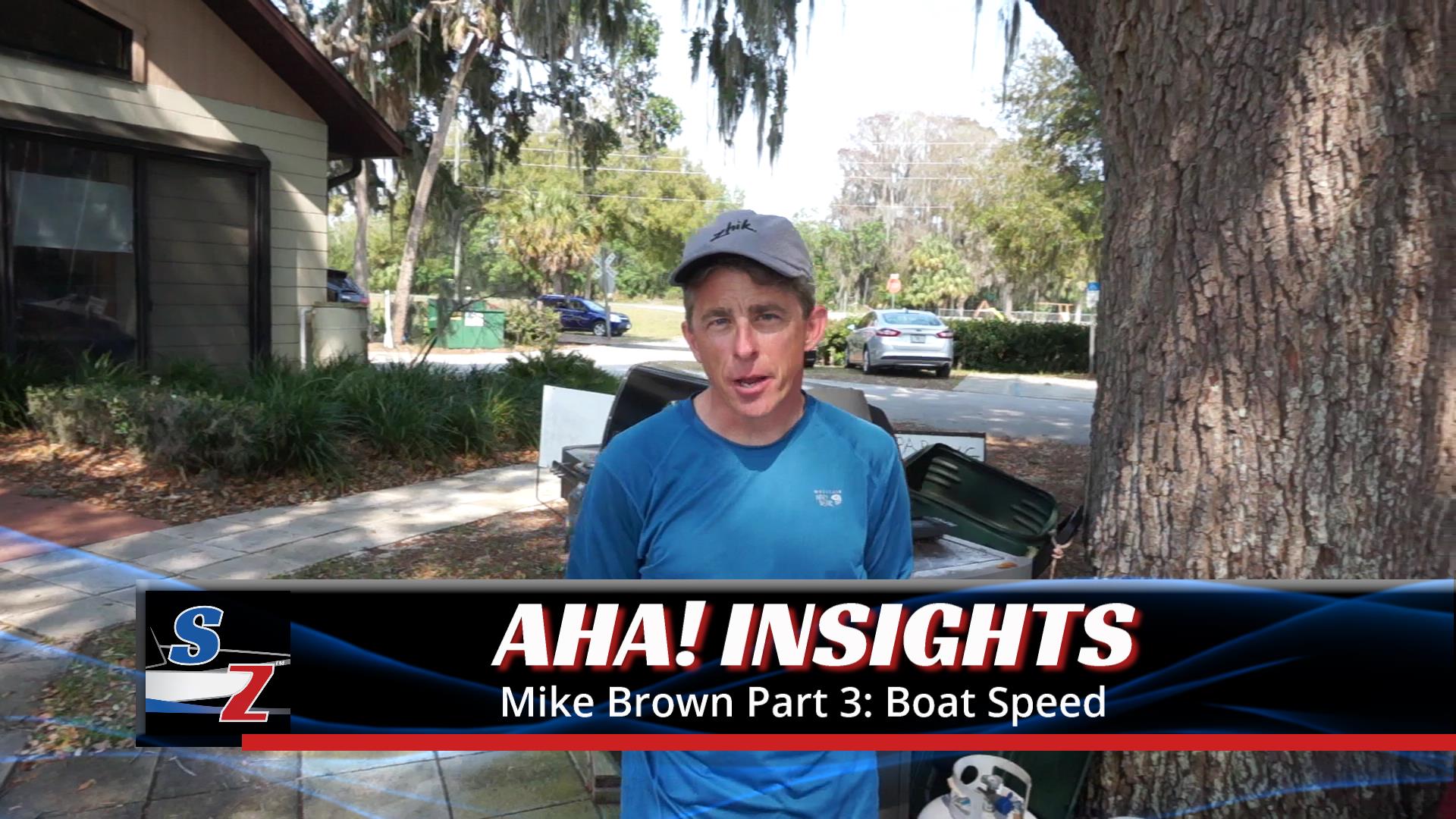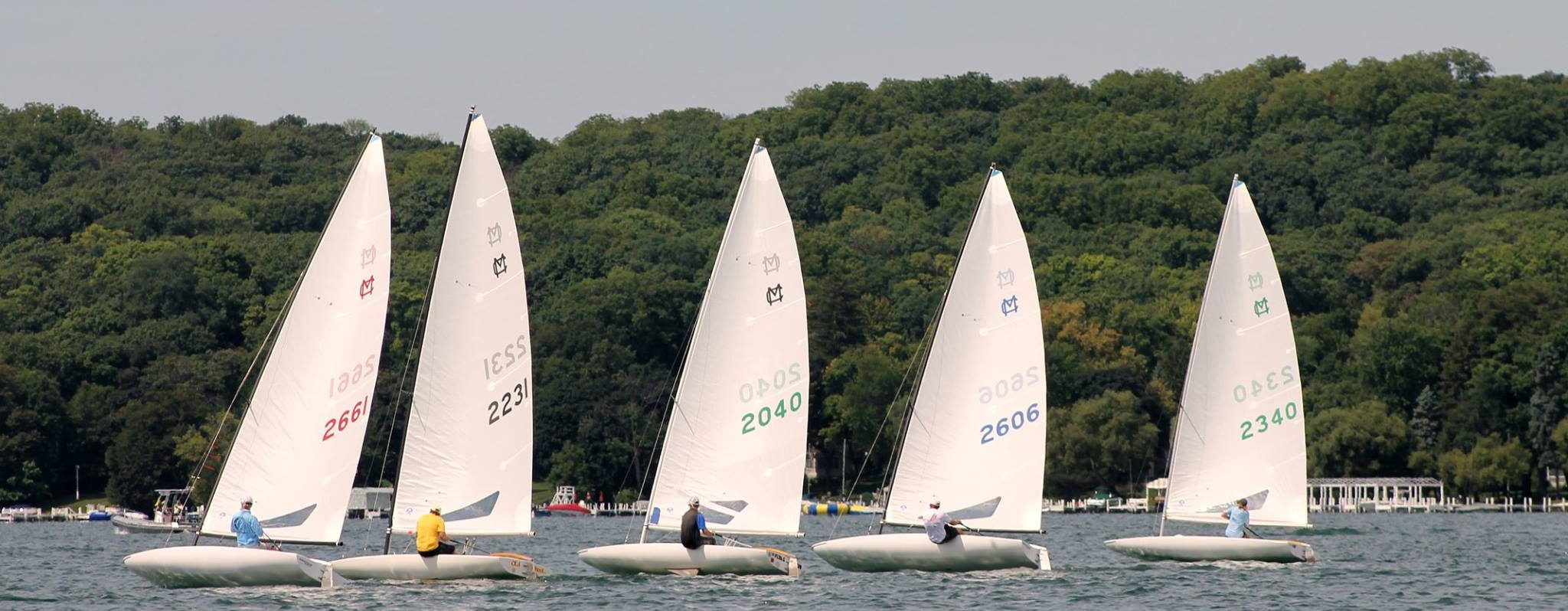Thus far in our SailZing posts about puff response, we have consistently advocated “feather and ease, hike, and trim” as the best technique for puff response. So, we were intrigued to read “The Fallacy of Ease, Hike, Trim” (Sailing World), by Mike Ingham. After reading Mike’s comments, looking at other sources, and listening to feedback from other top sailors, it became apparent that the best technique depends on the conditions. This post addresses puff response more comprehensively.
Puff Response Goals
As we think through the puff response actions, it helps to remember that when the puff hits, you are trying to accomplish three goals. Many sailors fall short in one of these three areas.
- Get max power from the wind as it changes
- Keep boat on its lines – constant angle of heel
- Increase speed or take height without diminishing speed
Response Actions and Priorities
In Perfect Sail Trim, a presentation for the US Sailing Leadership Forum, Mike Ingham tells us how to prioritize puff response actions:
Body first, then sheets, then angle.
Mike Ingham, US Sailing Leadership Forum Presentation
Let’s pick these actions apart and relate them to the puff response goals. For completeness, we have added “Controls” as an action.
- Controls. We added this step as a pre-puff action. If the puff is going to make you overpowered, you’ll need the the sail controls (cunningham, vang, outhaul, traveler) to keep the boat on its lines.
- Body first. Getting your body weight out as the wind increases is the only way to get max power. Otherwise, you are forced to ease the sail, luff, or let the boat heel up – all of which waste power.
- Then sheets. This refers to both the jib sheet and main sheet. We’ll focus on the main sheet here. Trimming or easing the sheet is next because the puff affects both sail shape and angle of attack, and a change in trim is the quickest way to respond to both of these.
- Then angle. By angle, Mike means steering to optimize the boat’s heading – both quickly as the puff hits, and then a re-adjustment depending on how the wind settles out. You will often steer as you adjust sheets. However, Mike puts steering last on the list because too many sailors just feather up in a puff.
Puff Response in the Three Wind Regions
In “The Fallacy of Ease, Hike, Trim” (Sailing World), Mike discusses the proper response in four wind regions – light, medium, medium-heavy transition, and overpowered. The light and medium wind responses are essentially the same, so we decided to use three regions. In each region, we’ll discuss the role of the body, controls, sheets, and steering.
Underpowered
Underpowered includes both light wind, when your body weight is inside the boat, and medium wind, when you’re sitting high side but not hiking much.
- Controls: should be off.
- Body: anticipate the puff and get your weight to windward and/or hike just before the puff hits.
- Sheets: the leech will open as the puff hits. Trim in as puff hits – not before – to bring the leech back in to optimum (parallel to boom or boat centerline).
- Steering: the apparent wind moves aft in a puff, so you can gently head up as you trim in to match your sheeting angle. The goal is to keep the leeward luff telltales streaming and take height while accelerating.
Transition
In the transition region, you’re already hiking and the puff will transition you to being overpowered. Anticipation and timing are crucial.
- Controls: get them on – just before puff hits.
- Body: hike just before the puff hits, if not already hiking fully.
- Sheets: ease if needed – as the puff hits. In this case, you’re easing to open the leech and keep the boat on its lines. Be ready to re-trim quickly. The front of the puff is often the most abrupt and you’ll want to re-power as soon as the force of the puff dissipates.
- Steering: head up as you re-trim. If the puff is strong, you may also have to head up sooner, to help absorb the puff’s force if easing isn’t enough. In either case, as the boat loads up from the puff, you may feel an additional tug on the tiller. It’s good to let the tiller follow this tug; you gain height while not fighting the tug.
Overpowered
In this region, you’re hiking constantly and the depowering controls are fully on. Don’t forget to use the traveler to depower in a big breeze. The only actions remaining are easing and steering.
- Ease sheets and feather (steer up slightly) simultaneously.
- When overpowered, you need both techniques to keep the boat on its lines.
- Easing is always important, since it quickly opens the leech and matches the angle of attack to the change in apparent wind.
- Feather up gently while easing. Feather more in flat water, since you can take height without waves to slow you down. Frank Bethwaite says feathering should be gentle and limited to 3-5 degrees to avoid drag from over-steering.
FAQs About Puff Response
We tried to anticipate questions and challenges to the guidance above.
Some sailors tell me to go straight or bear off in a puff to gain speed first.
If you’re underpowered and going slow, this technique may work fine, and is certainly better than luffing up and losing power. However, the apparent wind moves aft temporarily in a puff, so you’ll have to ease your sheets to avoid stalling the sail. Easing will also de-power the leech. This is probably why Ingham and others recommend trimming to keep the leech powered up and steering up gently to match the trim angle.
So sometimes the response to a puff is to ease, while other times the response is to trim?
Yes, definitely. When underpowered, a puff opens the leech, depowering the boat. You want to respond by trimming in. When overpowered, you want the leech to open, so you ease to help it open. Ingham says he sees many sailors that don’t execute this properly.
Do I take action before, after, or as the puff hits?
It depends on the action. Here’s a summary:
- Hike before the puff hits.
- Adjust controls before the puff hits.
- Trim the sheets as the puff hits or just after, when underpowered.
- Ease the sheets just before the puff hits when overpowered.
- Steer up as you re-trim when not overpowered.
- Steer up as the puff hits when overpowered.
What should I do if I get caught off-guard?
- If you’re underpowered and don’t get hiking soon enough, you can ease or point up, but this gives up power. Try to avoid this.
- If you’re in the transition region and your controls aren’t on, you can feather up to take the load off the boat while you get the controls on. Easing a lot is not ideal, because on most boats you can’t pull the vang tight with the sail eased. You can also drop the traveler temporarily while you pull on controls.
Don’t be Lazy with Mainsheet Tension – discusses Bethwaite’s puff technique: feather/ease, hike and trim
MC Scow Speed Guide Plus Drills – also discusses puff response
Velocity Made Good: Definition and Application – shows why it’s important to accelerate in a puff to maximize VMG.





